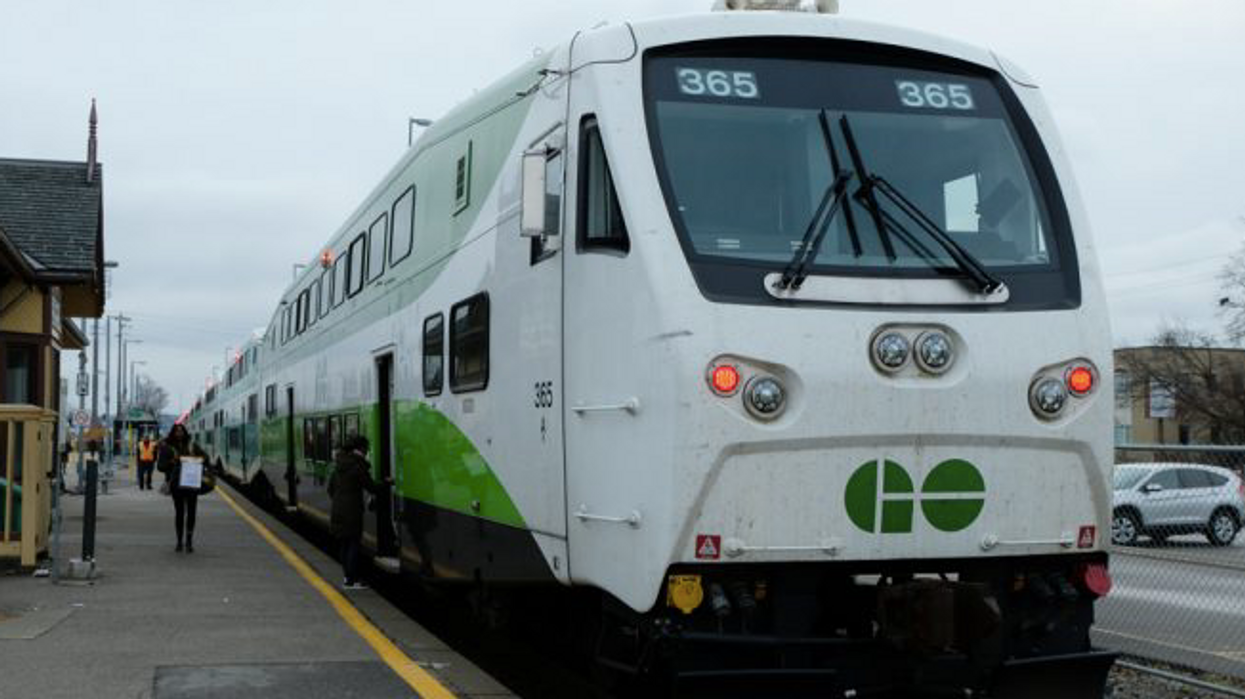Extending and expanding GO Transit to boost service into the Niagara Region's hot housing market is a long-haul operation, but the outlines of better service — and the impact they'll have on real estate — are already happening.
“It’s really long overdue for Niagara," says Gary Zalepa, Niagara Regional Councillor representing the town of Niagara-on-the-Lake.
"We’ve seen the benefits of better public transportation across other parts of southern Ontario, so I think it’s an exciting opportunity for our region.”
Recent stats from the Canadian Real Estate Association (CREA) found that Niagara has experienced the biggest percentage price jump of any local market in Canada.
READ: The Commute From Kitchener To The GTA Could Soon Be A Lot Easier
And a recent study from Canada’s national housing agency says GO stations in the Hamilton-Niagara region are already driving up the prices of homes.
The report by Canada Mortgage Housing Corporation (CHMC) found a direct link between the announcement and construction of new GO transit stations and increasing house prices.
In some cases, the report discovered, house prices went up as much as nine per cent prior to construction of a GO station.
READ: Hurontario LRT Already Igniting Development And Growth In Mississauga
In fact, CHMC senior analyst Anthony Passarelli told Global News that areas around West Harbour GO station in Hamilton and future stations such as St. Catharines, Niagara Falls and Confederation in Stoney Creek saw house price increases in and around expansion announcements going back as far as 2013.
The methodology used by CMHC, says Passarelli, is based on comparing past price increases of homes across a city before any GO expansion talk, with price increases in the same city following a transit announcement.
Significant efforts are now underway to improve public transportation infrastructure in Niagara, where the population is expected to grow by 41 per cent by 2041 to 610,000 residents.
The most recent major boost to public transportation is the expansion of service to daily trips between downtown Toronto and Niagara Falls, which began last January.
READ: Here’s What The Brampton-Mississauga Hurontario LRT Line Will Look Like
But even this boost is, for the moment, mostly symbolic, with only one GO train running into Union Station early in the morning via St. Catharines and returning to Niagara each day shortly after 5 p.m.
The once-per-day service is a far cry from regular rail service to outer regions in major urban areas such as London and New York City, which run full routes all day nearly every day of the year.
In New York City, for example, travellers can go by regional train from Grand Central Station virtually every hour to head upstate to places like Beacon, N.Y., about 70 minutes away, where a growing arts scene attracts tourists similar to the way visitors flock to Niagara-on-the-Lake or the Falls, only with greater convenience.
Still, the embryonic GO train service to and from the Falls, which also serves St. Catharines, is nevertheless considered a step forward by Metrolinx, which oversees regional transportation in the Greater Toronto Area and into the Golden Horseshoe.
READ: Mississauga Is The Fourth Priciest City In Canada For A One-Bedroom
While there was already a summer train service to Niagara, the new daily rail trip launched in January came more than three years ahead of schedule. Daily rail service was originally not supposed to arrive in Niagara until 2023.
Aside from the once-per-day train service, public transportation users travelling to and from Toronto and Niagara must rely on GO bus service from Burlington, which means a trip of nearly three hours to reach the Falls. GO runs about 35 daily bus trips to and from Niagara.
The expansion is taking time because it’s complex, according to public presentation documents prepared by Metrolinx.
The agency is overseeing the building of more than 25 kilometres of new tracks and signal, bridge widenings and upgrades plus the addition of a new GO rail fleet and facilities to serve Niagara.
READ: Niagara Falls Could Get A 72-Storey Mixed-Use Tower
Last week, Metrolinx released an update on its Niagara Falls rail service extension which has the target of starting a two-way all-day service to Niagara Falls on the Lakeshore West corridor.
So far, says Metrolinx, Niagara Falls and St. Catharines GO stations are ready for operation on the Lakeshore West line while Confederation is currently under construction. Grimsby has been earmarked for future expansion.
Metrolinx has estimated that yearly ridership between the lines will fall somewhere in the range of 1.5 to 2 million riders by 2031.
Hourly train service from the Confederation station in Hamilton's east end as part of the planned GO expansion into Niagara is being pitched by Metrolinx.
READ: GO Transit From Toronto To Niagara Falls Makes Weekend Getaways Easy
Friday, the transit agency's board will consider an updated business case for GO train expansion that looks at train frequency options to Toronto from east Hamilton, Grimsby, St. Catharines and Niagara Falls (plus expanded service to Kitchener).
The recommended option includes two-way, hourly service from east Hamilton to Toronto, with the "strongest annual demand" expected at Confederation — up to 808,000 annual boardings by 2031, reports the Hamilton Spectator.
Under that option, The Spectator reported, 11 daily trains would also run to and from Union Station in Toronto and Niagara Falls, a major increase over the current limited service.
READ: Metrolinx To Lower Fares On Short-Distance GO Transit Trips
Meanwhile, Zalepa said the Niagara region is preparing for the eventual expanded public transportation network and its expected major impact by putting planning controls in place for lands along the rail corridor.
“It will allow for appropriate [housing] development along that corridor, with proper services and densities,” Zalepa said.
In parts of the region, including Niagara Falls and Niagara-on-the-Lake, angry confrontations have arisen in recent years over development proposals that were seen by neighbouring residents as too conventionally suburban and damaging to the environment.
Public meetings held by Metrolinx in the region heard from residents saying they want infrastructure that supports tourism, protects the local environment and minimizes traffic.
READ: Massive New Waterfront Housing Development In Mississauga Moves Forward
In addition to challenges for commuters, it also remains difficult for people to take public transportation within Niagara Region. The region is seeking to offer more seamless transit and is now looking at a program that would offer on-demand rides in six-passenger vehicles between the various towns and cities that are spread out, such as the five communities that make up Niagara-on-the-Lake.
GO train service is not being contemplated for Niagara-on-the-Lake because there are no railway tracks or existing corridors that go into or near the town. The closest rail stations are in St. Catharines and Niagara Falls, which leaves visitors who don’t want to take the bus no option except to drive.
Metrolinx says that congestion throughout the Golden Horseshoe costs anywhere from $6 billion to $11 billion per year in lost economic activity.





















